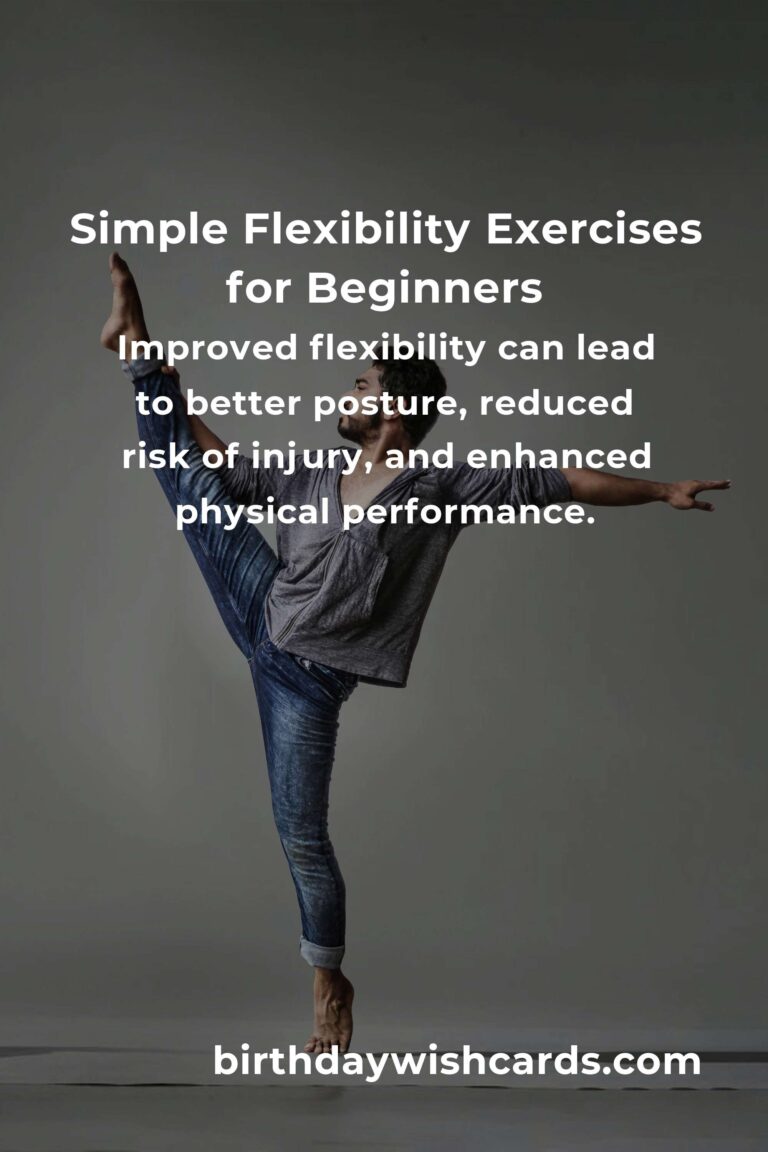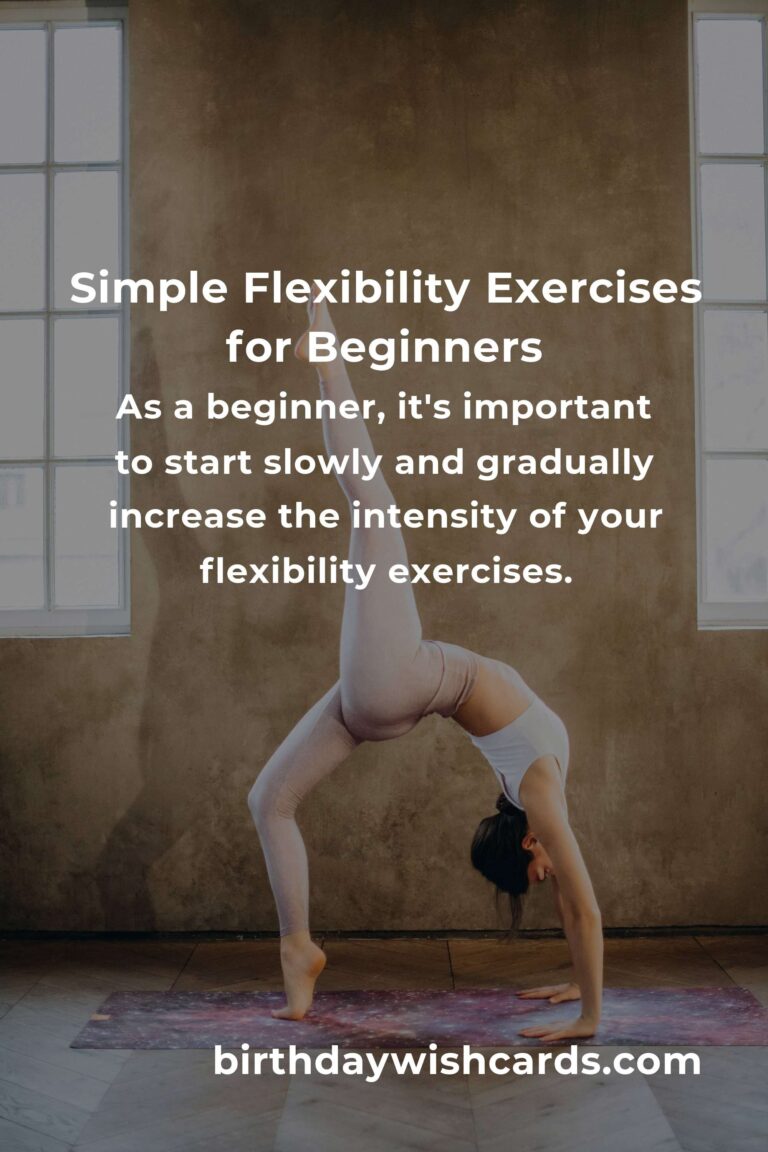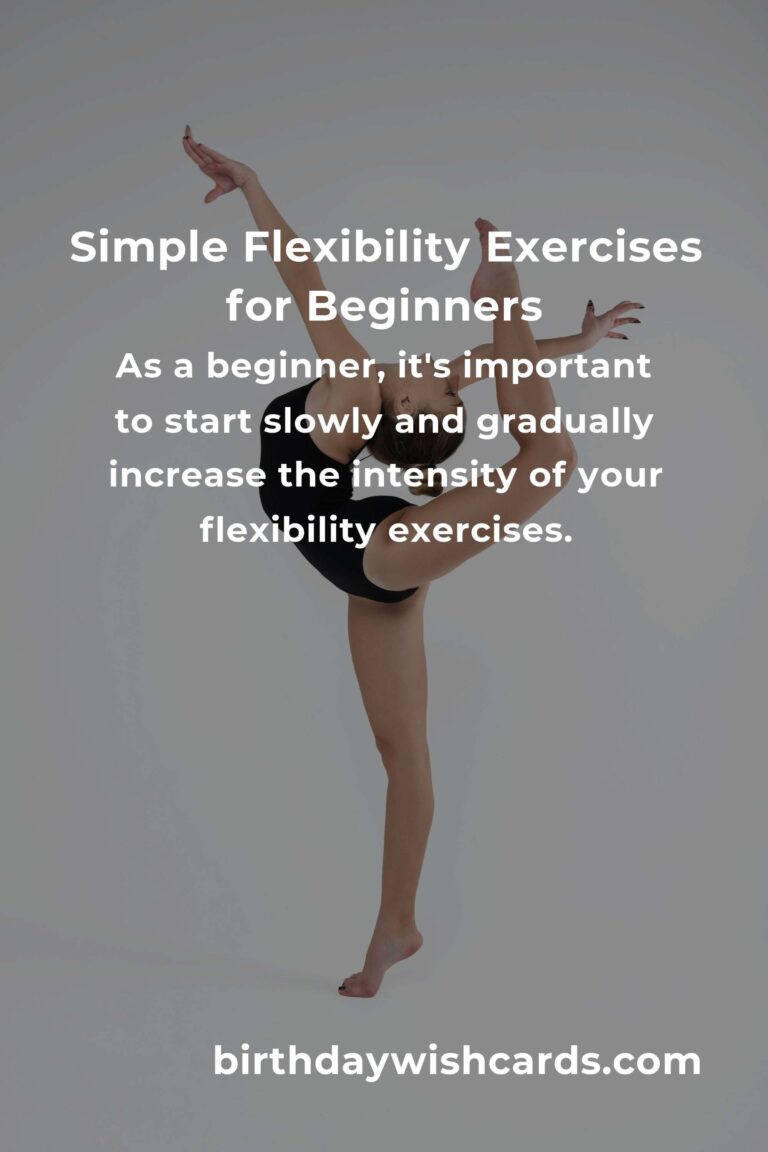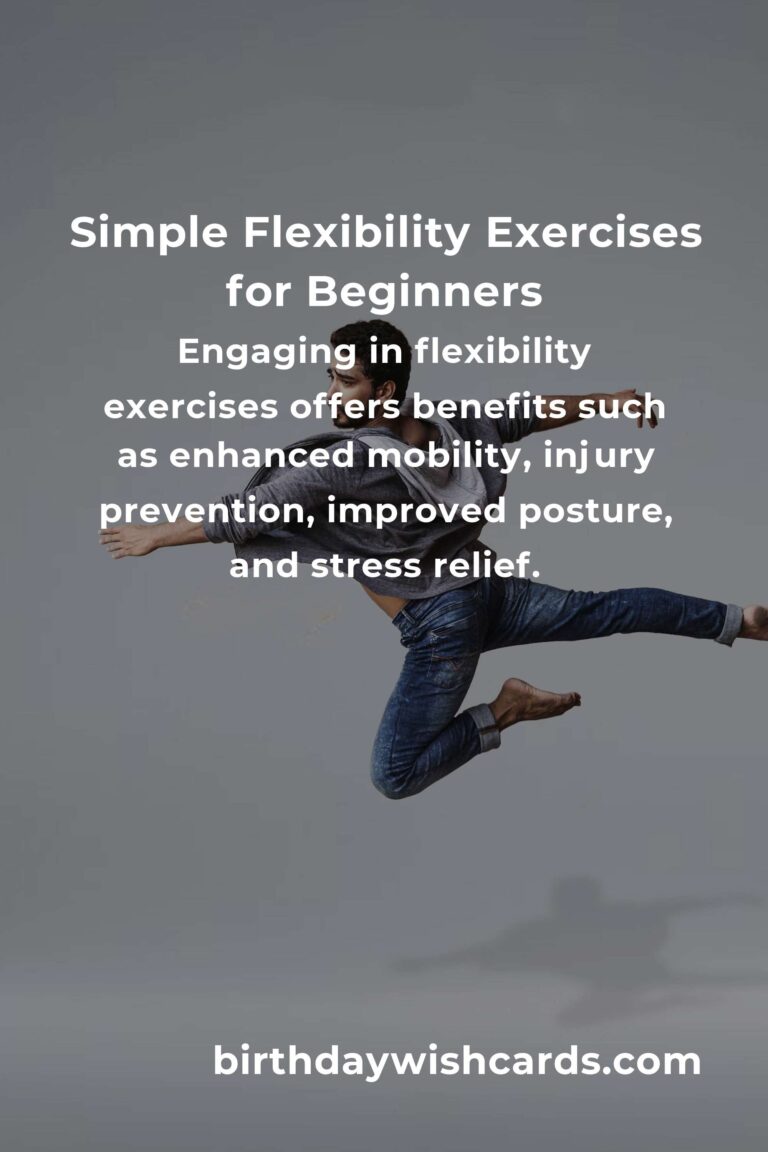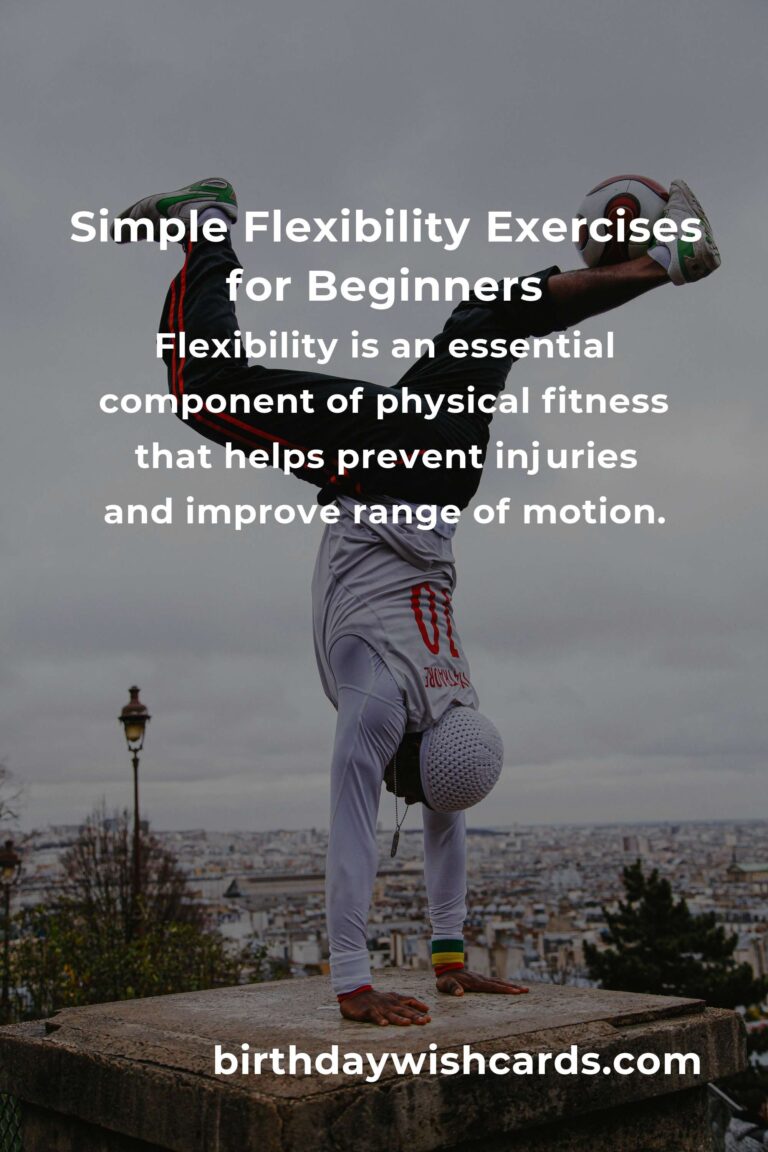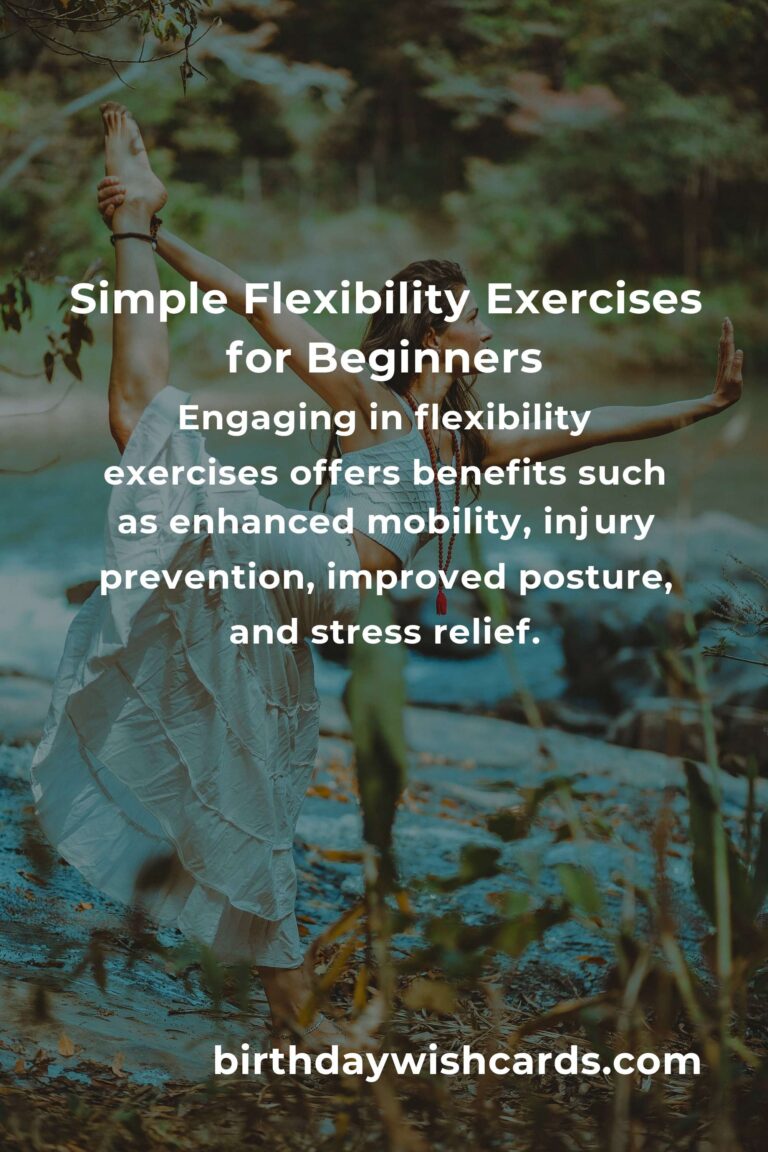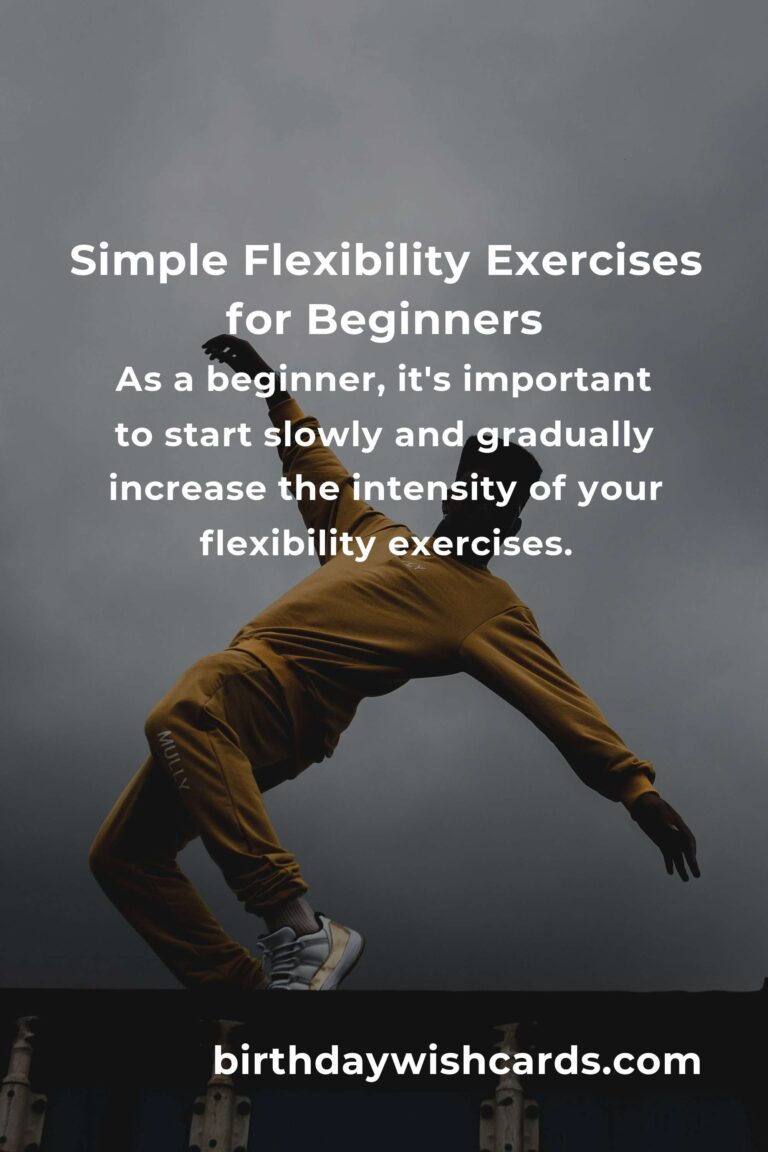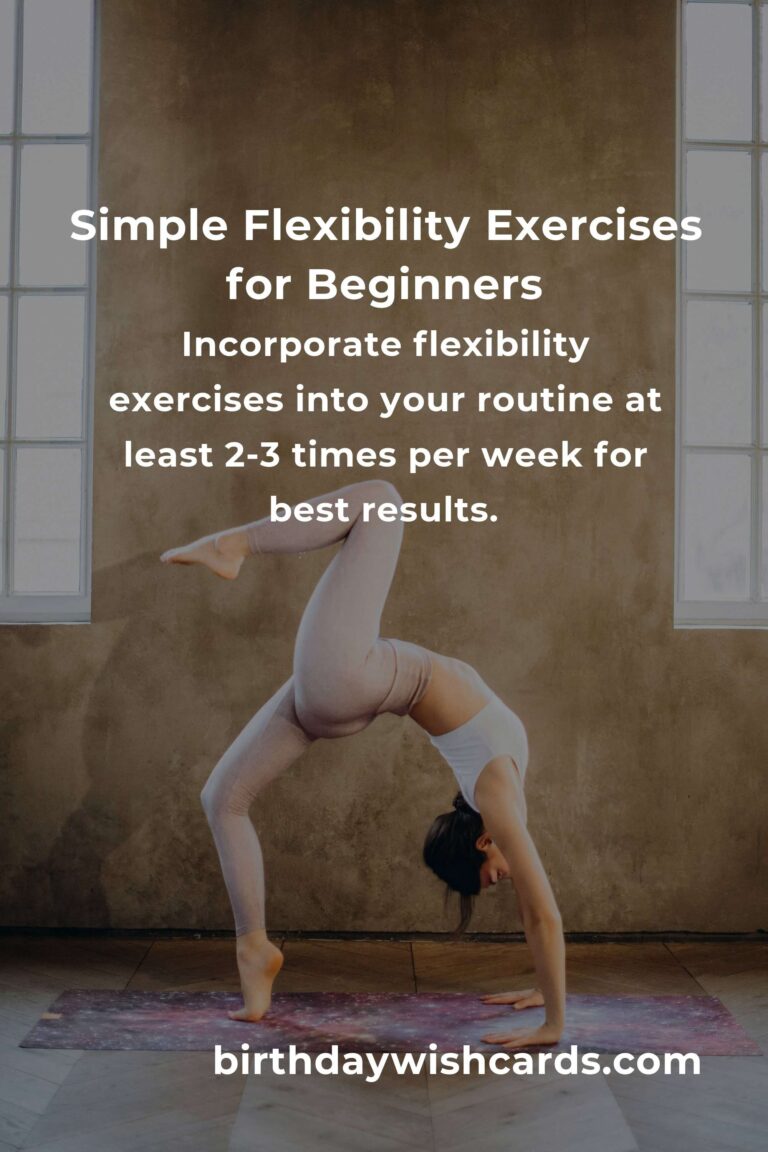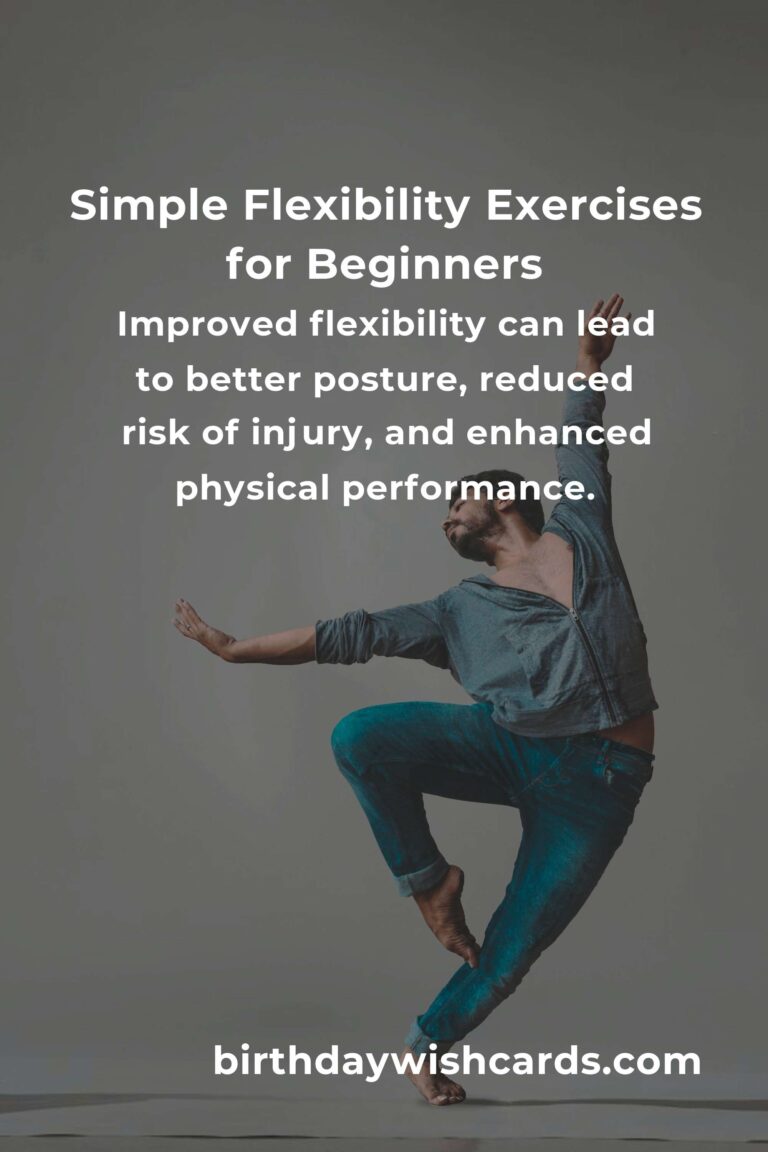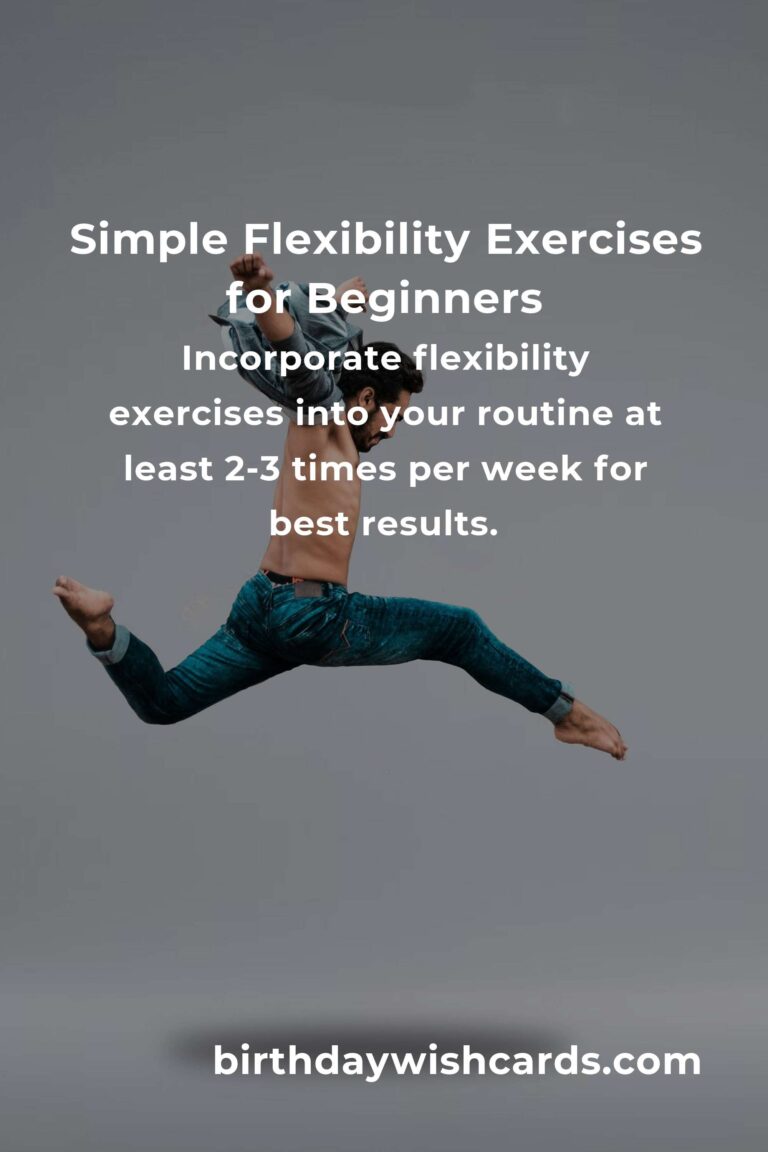
Flexibility is an essential component of physical fitness that is often overlooked. It plays a crucial role in overall well-being, helping to prevent injuries, reduce muscle soreness, and improve range of motion. For beginners, getting started with flexibility exercises can seem daunting, but with the right approach, it can become an enjoyable and rewarding part of your fitness routine.
Why Flexibility Matters
Flexibility refers to the ability of your joints and muscles to move through their full range of motion. It is important for daily activities, athletic performance, and overall health. Improved flexibility can lead to better posture, reduced risk of injury, and enhanced physical performance. Additionally, it can help alleviate muscle tension and stress, contributing to a sense of relaxation and well-being.
Benefits of Flexibility Exercises
Engaging in flexibility exercises offers numerous benefits. These include:
- Enhanced Mobility: Regular flexibility exercises can improve your joint mobility and muscle elasticity, making everyday movements easier.
- Injury Prevention: By increasing your range of motion and reducing muscle stiffness, flexibility exercises can help prevent injuries, especially those related to strains and sprains.
- Improved Posture: Many flexibility exercises target the muscles responsible for maintaining good posture, helping you to stand and sit with better alignment.
- Stress Relief: Stretching and flexibility exercises can promote relaxation and reduce stress levels, enhancing overall mental well-being.
Getting Started with Flexibility
As a beginner, it is important to start slowly and gradually increase the intensity of your flexibility exercises. Here are some tips to help you get started:
1. Warm Up First
Always begin your flexibility routine with a warm-up to prepare your muscles and joints. A light cardiovascular activity, such as walking or jogging in place for 5-10 minutes, can increase blood flow and make your muscles more pliable.
2. Focus on Major Muscle Groups
When starting out, concentrate on stretching major muscle groups, such as the hamstrings, quadriceps, hip flexors, shoulders, and back. These areas are often tight and benefit greatly from regular stretching.
3. Use Proper Technique
Ensure you are using proper form when performing flexibility exercises. Avoid bouncing or forcing a stretch, as this can lead to injury. Instead, hold each stretch gently for 15-30 seconds, breathing deeply to help relax your muscles.
4. Incorporate Flexibility into Your Routine
To see improvements, incorporate flexibility exercises into your routine at least 2-3 times per week. Consistency is key to gaining and maintaining flexibility over time.
Basic Flexibility Exercises for Beginners
Here are some basic flexibility exercises that are perfect for beginners:
1. Standing Forward Bend
This exercise stretches the hamstrings and lower back. Stand with your feet hip-width apart, bend at the hips, and reach towards the ground.
2. Cat-Cow Stretch
Begin on all fours, arch your back upwards (cat) and then dip your spine downwards (cow). This helps to relieve tension in the back and improve spinal flexibility.
3. Seated Forward Bend
Sit with your legs extended in front of you. Lean forward from your hips and reach towards your toes, stretching the hamstrings and back.
4. Shoulder Stretch
Extend one arm across your body at shoulder height. Use your other arm to gently pull it closer to your chest, stretching the shoulder muscles.
Conclusion
Flexibility is a vital part of any fitness routine, providing numerous health benefits and enhancing overall quality of life. By starting with basic exercises and incorporating them regularly into your routine, you can improve your flexibility and enjoy the lasting benefits it brings. Remember, consistency and proper technique are key to safely and effectively increasing your flexibility.
Flexibility is an essential component of physical fitness that helps prevent injuries and improve range of motion.
Improved flexibility can lead to better posture, reduced risk of injury, and enhanced physical performance.
Engaging in flexibility exercises offers benefits such as enhanced mobility, injury prevention, improved posture, and stress relief.
As a beginner, it’s important to start slowly and gradually increase the intensity of your flexibility exercises.
Incorporate flexibility exercises into your routine at least 2-3 times per week for best results.
#Flexibility #BeginnersFitness #Stretching #Wellbeing #PhysicalHealth


